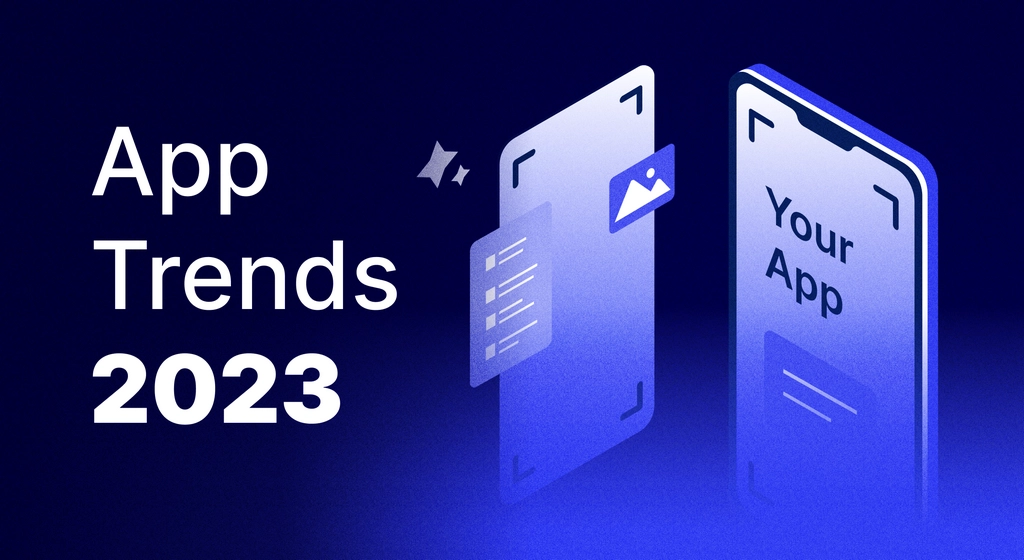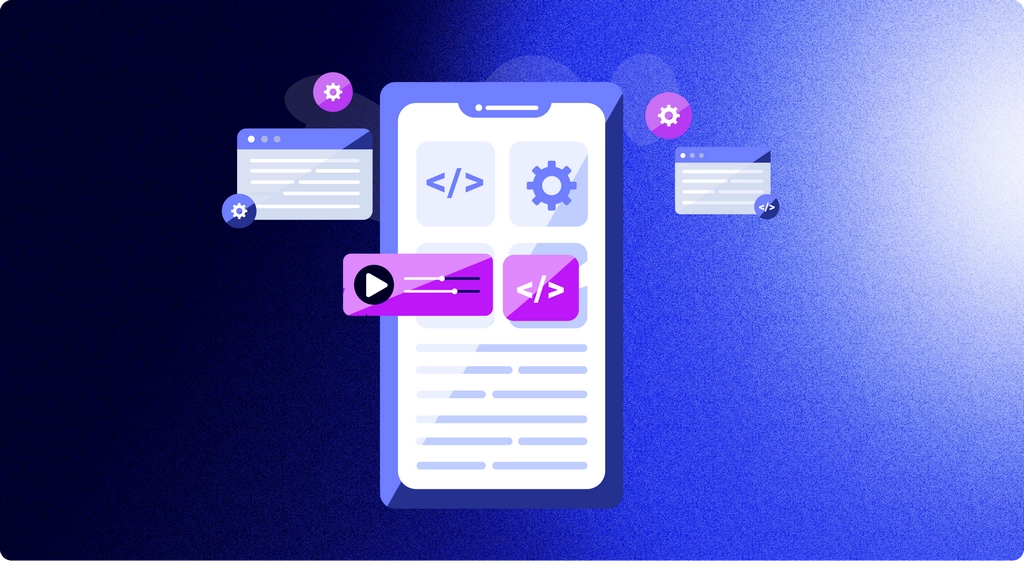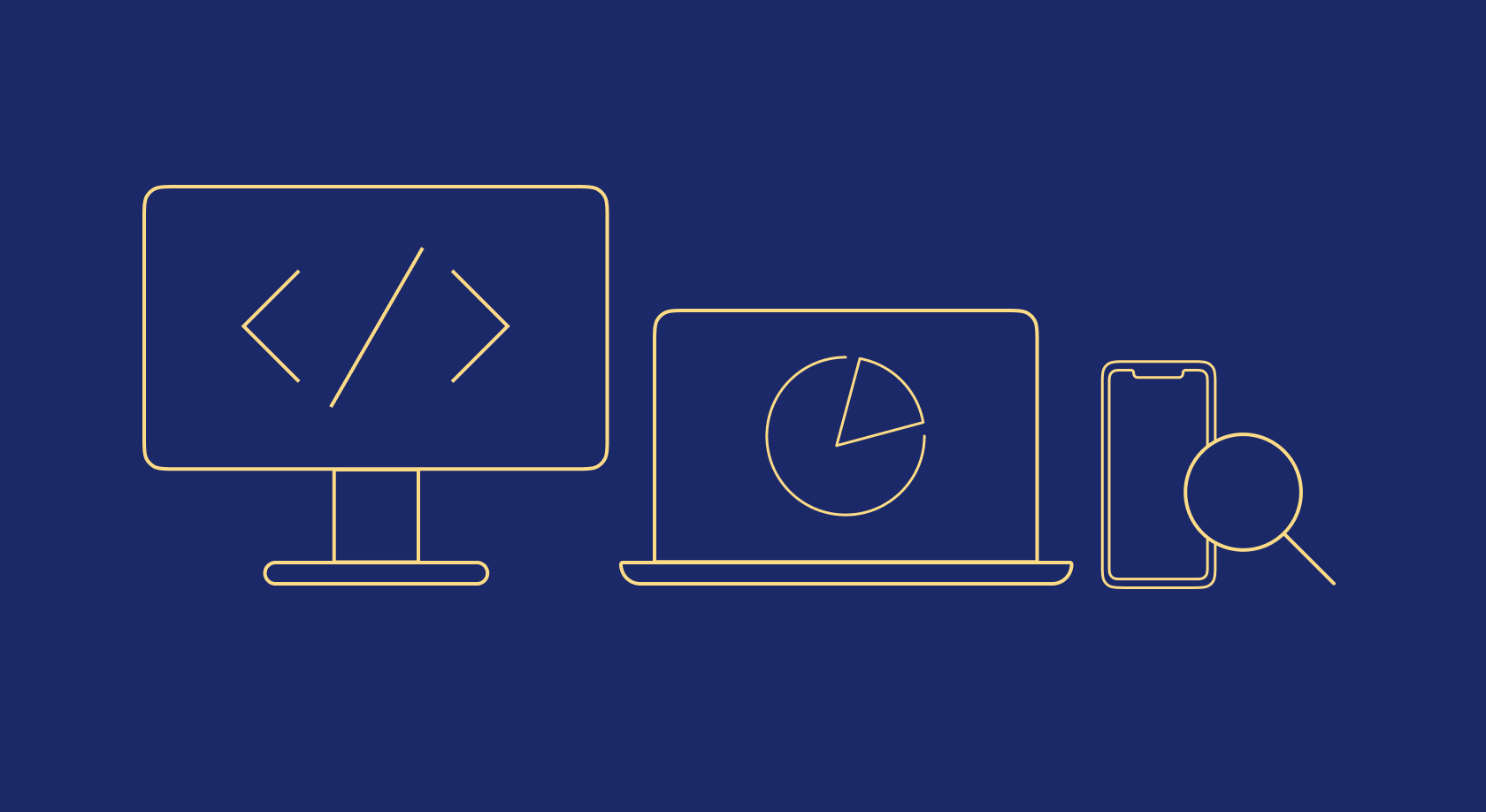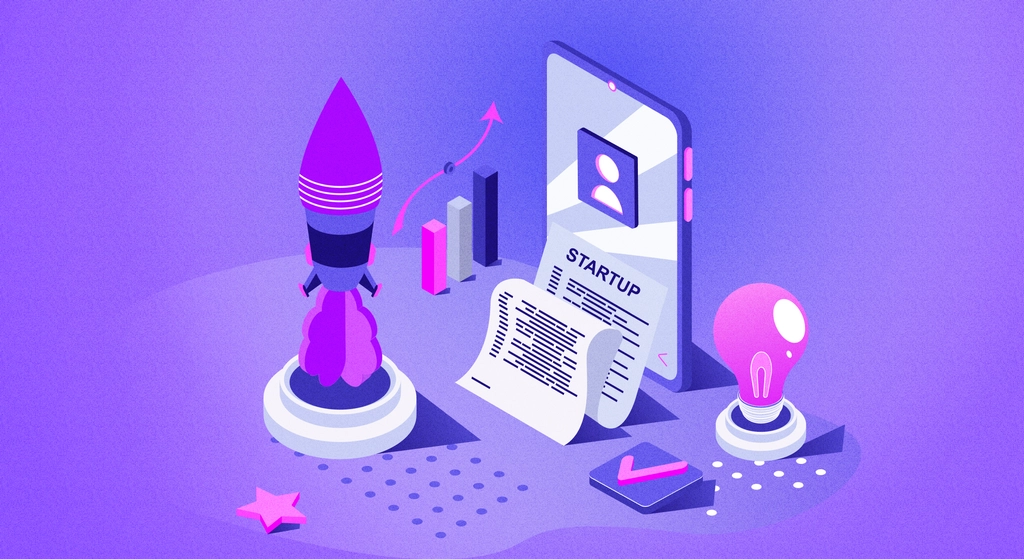Mobile app development is constantly evolving. Developers, unlike any others, know how much apps impact our daily lives. This is why understanding the latest trends – or better yet, being able to predict them – is key.
As we move through 2025, a handful of new technologies and behavioral patterns are changing the way we use apps and steering the industry’s future. In this article, we’ll give you a rundown of the fifteen most important trends for the years ahead. Whether you’re an app developer, a tech enthusiast, or just curious, this guide will help you stay up to date.
Augmented Reality (AR) in mobile apps
Over the past few years, AR has taken the mobile app development realm by storm, offering numerous possibilities to entice and engage users. Its growing influence is evident across a myriad of applications, from gaming and social media to education and, perhaps more prevalently, e-commerce.
While games like Pokémon Go have been using this trend for a while, it makes more sense to pay attention to the cases of actual business use, like IKEA. The Swedish behemoth allows users to visualize furniture in their homes before purchase, thus driving purchases and minimizing churn and unwanted returns.
AR integration into apps boosts customer engagement, creates memorable experiences, and can even drive revenue growth. Users, on the other hand, benefit from more interactive and personalized experiences, which significantly enhance usability and satisfaction. Being able to bring the digital elements into the real world still has that wow factor on the audience making the shopping experience more exciting and rewarding.

Artificial Intelligence (AI) & Machine Learning (ML) integration
AI and ML are behind several advancements in mobile apps that we use every day. They power everything from personalization algorithms in streaming apps like Netflix and Spotify, to predictive text and voice recognition in virtual assistants like Siri and Google Assistant. Additionally, they’re instrumental in refining search results in e-commerce apps, enhancing the overall user experience by providing personalized recommendations.
The practical applications of AI and ML in mobile apps are far-reaching and continuously growing. In a nutshell, machine learning allows you to train the engine in your user data to provide a better, tailor-made experience. For example, in banking apps, the technology aids in fraud detection and customer service through chatbots, and fitness apps use it to provide personalized workout and nutrition plans based on user data.
The benefits of AI and ML integration into mobile apps are significant. For businesses, they facilitate better decision-making, improve customer service, and drive operational efficiency. For users, they deliver personalized experiences, save time through automation, and increase app utility.
With ChatPGT breaking the closed industry circle and introducing the common folk to the new technology, AI and ML are no longer buzzwords but key components in the mobile app development industry. As we look forward to the rest of 2023, their influence is only set to increase.

On-demand apps
On-demand apps are the ones used to order food delivery, gifts, or a cab: a type of app you only open when you need something. They are popular due to their convenience, instant service, and ability to bridge the gap between service providers and consumers. These apps align with today’s need for immediate gratification and provide services at the user’s fingertips, often in real-time or within a very short time frame.
On-demand apps offer immense flexibility and convenience to customers who can access a range of services from the comfort of their homes. Businesses, on their part, can reach a wider audience, improve customer engagement, and increase operational efficiency.
Many sectors are reaping the benefits of this emerging category. Food delivery apps like UberEats and GrubHub have revolutionized the food industry. In the transport sector, Uber and Lyft have disrupted traditional taxi services. Home services, including cleaning, plumbing, and maintenance, are provided through apps like TaskRabbit.
The gig economy has largely benefitted from these on-demand platforms, providing flexible work opportunities. With more and more people trusting the services and marketplaces to fulfill their needs, this app category is definitely on the rise.
No-code and low-code opportunities
With AI already taking over entry-level tasks like debugging, middle and senior-ranking developers are given the chance to work on something new and exciting. However, the high hiring costs and the ever-rising wages come in conflict with a flexible and hypothesis-driven world of app development, where new ideas should be implemented instantly – and ideally, with little to no extra costs.
An option to quickly – and safely – introduce or test out a new feature without employing a full developers team is a game changer, and the market already has several trustworthy products to offer. No- and low-code services allow developers, designers, and product owners to endlessly test and polish their apps. With easy-to-use GUIs and vast, yet secure feature lists, no- and low-code solutions are transforming the way apps are built, reducing the time, effort, and specialized skills required.
One of these is Adapty and its no-code paywall builder. It is perfect for A/B-testing changes in visuals and copies without having to call a developer every time you want to try out a new idea. Built with native iOS support and familiar interface elements, it won’t break the current state of the app and will allow developers and product owners to deploy more solutions and ideas while using fewer resources.
IoT-enabled mobile apps
In our daily use, the Internet of Things (IoT) is a network of interconnected devices that communicate and exchange data, mostly in the home and urban settings. These devices, equipped with sensors and software, can range from household items like refrigerators and thermostats to sophisticated industrial machines. IoT’s integration in mobile app development completely changes the way we interact with our surroundings and manage various aspects of life.
Integrating IoT in mobile applications can improve user experience and productivity by providing real-time data, enhancing personalization, and automating tasks. For instance, a mobile app linked to a smart home system allows users to control their home appliances remotely. Similarly, fitness apps can sync with wearable devices, providing real-time health monitoring and personalized workout plans based on collected data.
IoT-based mobile apps are valuable in actual business use, and unlike software-only products, can have a real-life impact. For example, in agriculture, farmers can monitor soil moisture levels and automate irrigation through their phones, and in logistics, real-time tracking of vehicles and goods can significantly improve business efficiency.

Touchless and alternative UI
New, innovative user interfaces (UI), which include voice, gesture, and even brain-computer interfaces, bring a multitude of benefits.
One of the key alternatives to touch UI is voice. Voice recognition or voice-activated technology is a feature that’s increasingly being incorporated into apps. It allows users to interact with apps through spoken commands, as the technology can understand and convert spoken language into actionable tasks.
Gesture-based interfaces are another alternative that can offer intuitive and immersive experiences. They are especially beneficial in augmented and virtual reality applications, where traditional touch interactions are less applicable.
Alternative UIs are expanding the boundaries of human-computer interaction. Understanding and leveraging these trends can unlock new possibilities for app innovation and user engagement.

Wearable device apps
Wearable device apps bring technology and digital user interaction closer than ever — literally. Apps designed for smartwatches, fitness trackers, and even smart clothing, extend the mobile experience beyond smartphones, providing users with immediate access to information and services right on their bodies.
One of the most influential benefits of wearable device apps is the personalized user experience. Health and fitness apps can track and analyze user activities, providing tailored insights and recommendations for individual health improvement. For instance, smartwatch apps can monitor heart rate, steps taken, calories burned, and sleep patterns, enabling users to make informed decisions about their lifestyles.
Wearable device apps are beneficial in enhancing productivity and convenience. Apps designed for smartwatches allow users to receive notifications, make calls, send messages, and even make payments, all without needing to use their smartphones.
5G technology and mobile apps
5G technology, with its high-speed, low-latency, and enhanced capacity features, is set to profoundly advance mobile app development. It promises to unlock new opportunities and features, pushing the boundaries of what apps can achieve.
One of the significant ways 5G is revolutionizing mobile app development is by enabling real-time data transfer and processing. Apps that rely on instant data exchange, such as multiplayer gaming apps, can benefit significantly from reduced latency, providing users with seamless experiences. 5G also drastically improves the potential for advanced technologies like augmented reality (AR) and virtual reality (VR). The high-speed data transfer allows these technologies to function smoothly, enhancing their performance in apps.
The new generation of mobile connectivity is about to transform all, but specifically IoT-based apps. With the ability to connect more devices simultaneously and reliably, 5G can handle numerous IoT devices’ data needs more efficiently and effectively. This could revolutionize apps in sectors like smart homes, smart cars, healthcare, and logistics, where large numbers of connected devices are common.
Gamification as a monetisation strategy
Gamification is another influential trend in app development, transforming how users engage with apps by incorporating game elements into non-gaming contexts. The goal is to enhance user engagement, increase retention, and stimulate desired behaviors, turning mundane tasks into exciting and interactive experiences.
One of the most successful examples of gamification is the language learning app, Duolingo. The app uses game-like elements such as levels, experience points, streaks, and rewards, making the learning process fun and addictive. Another great example is the fitness app, Zombies, Run! Here, users are immersed in a game where they must run in the real world to escape zombies, making their exercise routine feel like an exciting adventure.
Habitica, a well-known productivity app, gamifies tasks and habits. Users create a character that levels up when they complete tasks and loses health when they fail, thereby incentivizing productivity. Even social media apps like Snapchat use gamification elements, where users can earn streaks for consistently exchanging messages with friends.
By gamifying apps, developers can create compelling user experiences that increase user motivation and engagement. With its proven effectiveness, gamification is a trend that will continue to dominate app development in 2023.

Blockchain technology in mobile apps
Blockchain technology, with its decentralized, transparent, and secure nature, is making a significant impact on mobile app development. It is providing a new framework to store data and conduct transactions, which holds potential for a variety of decentralized applications used by many.
One of the primary benefits of integrating blockchain into mobile apps is enhanced security. As each transaction is encrypted and linked to the preceding transaction, it becomes nearly impossible to alter or forge data. This is particularly advantageous for apps that handle sensitive information, such as financial or personal data.
Blockchain’s decentralized nature means no central authority controls the data, enhancing transparency and trust. Users have control over their data and can verify transactions without needing intermediaries, which can also reduce costs and increase efficiency.
Blockchain technology is already being used in the market. Cryptocurrency apps like Coinbase use it for secure financial transactions. Supply chain apps leverage blockchain to track goods, ensuring transparency and traceability. The technology is also being used in gaming apps for trading and ownership of digital assets.
User-generated content in apps
Apps that allow users to generate and share content, also known as User-Generated Content (UGC) apps, have gained immense popularity and are a significant trend in mobile app development. These platforms leverage the power of community and co-creation, turning users from mere consumers to active creators of content.
UGC apps offer a platform for users to express their creativity, opinions, and experiences. They foster community engagement and can provide a wealth of diverse, authentic content that keeps users returning. The shared content, whether it’s text, images, videos, or reviews, is often perceived as more genuine and relatable than brand-produced content, fostering trust among users.
One of the most popular examples of UGC apps is TikTok, where users create and share short video clips. The platform’s success lies in its user-driven content and easy-to-use video creation tools. Instagram, too, thrives on user-generated photos and videos. Apps like Reddit and Quora allow users to generate and share text-based content, encouraging knowledge sharing and discussion. Another prominent example is Airbnb, where user-generated reviews greatly influence the platform’s trustworthiness.
UGC apps have not only transformed how content is created and consumed but also significantly influenced social networking, e-commerce, entertainment, and beyond.
Apps for foldable devices
Foldable mobile devices introduce a new dimension to user experiences and mobile app design. These devices feature screens that can be folded to either enlarge the display area or make the device more compact. The rise of the so-called “foldables” is influencing app development, with brands needing to adapt their applications to this new form factor.
A key trend in foldable mobile app development is responsive design. Apps need to seamlessly adjust their layouts based on whether the device is folded or unfolded. This calls for a complete rethinking of user interface design and how to utilize the expanded screen real estate effectively. For instance, multi-window or split-screen functionalities could be more prevalent, allowing users to interact with multiple apps simultaneously.
Another trend is the development of apps specifically designed to leverage the unique features of foldable devices. This could involve creating immersive experiences in gaming and media consumption apps or enhancing productivity in business and education apps. Imagine a typical double TikTok screen, with a TV show on the top and a game on the bottom – but make it an actual user experience.

Subscription monetisation model
Subscriptions are the staple of in-app monetization, offering a recurring revenue model that’s beneficial for both developers and users. Instead of a one-time purchase, users pay a regular fee, typically monthly or annually, to access an app’s features or content.
Subscription models provide a predictable and continuous revenue stream, which can support ongoing development and maintenance. The recurring nature of subscriptions allows developers to build long-term relationships with their users and focus on improving user engagement and retention.
We at Adapty are the advocates of this monetization strategy, having explored the topic back and forth and offering the best in its class low-code solution to introduce subscriptions into your app. In a couple of clicks, you get to quickly see if the model is right for you. Try it out yourself: implement in-app purchases and subscriptions with no server code using Adapty.
Several apps have successfully adopted the subscription model across various sectors. Spotify and Netflix, for example, offer unlimited access to their vast music and video libraries for a monthly fee. Cloud storage services like Google One and productivity apps like Microsoft 365 also rely on subscriptions.
Recurring payments are a significant trend in app development, offering a sustainable and user-friendly monetization method. As digital consumption habits evolve, the subscription model is likely to become even more prevalent.
Conclusion
As we’ve shown throughout this article, these 15 trends are not only transforming the way we develop and use apps but are also opening new pathways for personal and business growth.
Whether it’s the rise of foldable devices, the adoption of IoT and blockchain technology, or the focus on user-generated content and subscription models, each trend represents a unique response to evolving user needs and technological advancements. Developers should pay more attention to the growing emphasis on inclusivity and accessibility, seen in the surge of voice technology and touchless UIs, which ensures digital experiences are available to a broader audience.
Staying attuned to these trends is crucial for app developers, entrepreneurs, and product owners alike. By understanding and incorporating these trends, we can create apps that are not only relevant and competitive but also drive meaningful change in our app-powered daily lives.




